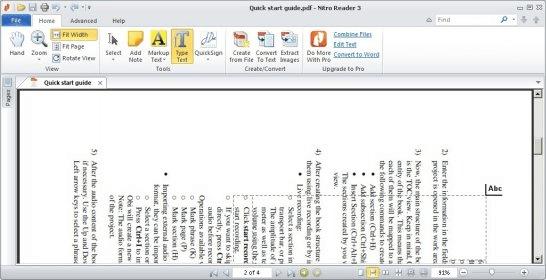


In addition, hills are great for teaching.
Nitro reader 5 running very slowly free#
Using the sequence of hills to sleds to free sprints gets three unique qualities trained. Natural inclines with hills (opposed to man-made ramps) are a crapshoot at best in getting one that is constant and safe. Hills or ramps can train more people, so if you have a great hill all the better, but take note. The combination of hills or ramps with sleds is interesting. Obviously many specific details exist in making the workouts fit each program, but with so many universal qualities of training consistent with programs, weighted sled workouts will be easy to integrate without much adjustment. Each workout has a unique theme or small benefit, but the overtone is getting loaded speed training, not slow motion running. For me the opportunity to train is about specificity and balancing general qualities with a recipe that is consistently working year to year. Much of the input comes from the classic USATF education process and talking to college and club coaches. I can’t claim to have invented or designed any of these workouts. We often overthink things and let’s be direct, our top priority is getting athletes to go faster. I have no emotional attachment because results are about faster times, not smarter coaches. After seeing the cause and effect carefully, use that approach and reap the benefits. If you are looking for results, see how loading the sled improves the rate or acquisition of better performances in speed within your program, not in isolation. After looking at athlete training in the weight room and jump testing, along with speed timing without the sled, prescriptions must be carefully tailored or you are missing the opportunity for better results. I never timed sprints much before 2000, since I was always a proponent in the 10% of bodyweight rule until I realized it was a very rough guideline. The best approach is clear, but requires some experimentation. On the other hand, just because a program is well- rounded doesn’t mean the specific task of sprinting with sleds should be tossed in without careful attention. Sled training must reflect the entire training program and not be seen as an isolated variable. Some coaches are known to collect a “greatest hits” of training systems and combine them into one program. My own program on the track-integrated with a successful weight training program-may fail. Each system of training will use modalities and sequences differently. While everyone has to worry about the first step regardless of the sport, it’s a good idea to be good in all areas of speed to reduce injuries and improve the efficiency of running.Īthlete Program Variance.

Some athletes are more talented or gifted in different areas and can benefit from having loads catered to improving areas in acceleration they may not be doing well in. Some smart coaches have used a percentage of dropoff in velocity by timing sprints with and without loading.Īcceleration Curves are Individual. Sprint velocities in training will change over time and vary from fatigue, so loading must be adjusted constantly. Even two athletes of similar build (height and lean mass) may have different speed abilities. One athlete who is out of shape and explosive and another who is lean and very powerful may share the same mass, but it’s not a good number for base-loading a sled. I have mentioned the problem with percentages in the past, and here are four reasons why this is a poor approach to using sleds.īodyweight is Vague. Early acceleration in research has some relationship to exercises that involve maximum strength and power qualities, so when choosing a sled load most will pick something close to 10% of one’s bodyweight. When the body speed increases past the 10m or so, then we see the ability to accelerate to maximal speed (terminal acceleration) showcased with lighter sleds improving late acceleration. Some research shows the value of various weighted sleds when sled training is the primary option, but what about stepping back and seeing the big picture? Early acceleration is about overcoming inertia, and that means maximal strength and power transfers to getting a body in motion quickly. Nailing the Coffin Shut with Heavy Sled Research In this article, I will demonstrate why lighter sleds are better options than heavy ones, and why timing sprints with sleds is wiser than chasing plate loading. After years of seeing some of the best programs firsthand and talking to great coaches, I’ve concluded that weighted sleds should be a speed tool, not a labor of strength. When your sole job is getting someone to run faster, no excuses exist when they don’t. The debate and controversy on the best way to use weighted sleds for getting faster is timeless.


 0 kommentar(er)
0 kommentar(er)
